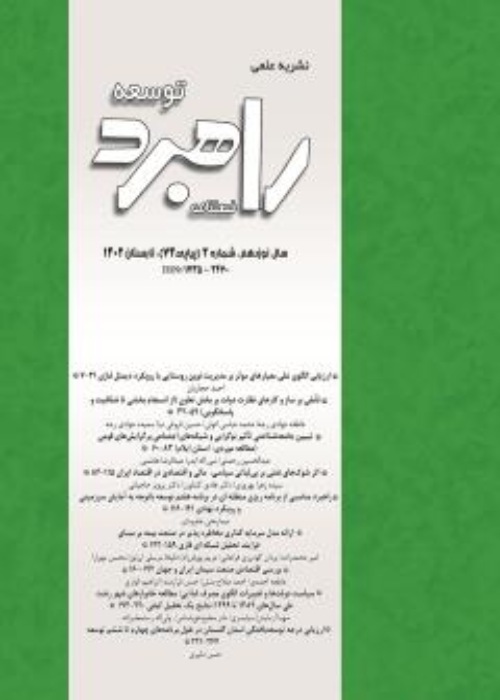Methods and Indicators to Measure Poverty and Economic Welfare
Author(s):
Abstract:
Poverty and poverty reduction were and continues to be one of the main components of economic programs at the global level. Over the past years, reducing the rate of poverty has been regarded as the main objective in policy-making and establishment of the economic enterprises. Millennium Development Goals, agreed by world leaders in 2000 puts the issue on top of the agenda.Quantitative studies on poverty kicked off at the beginning of the twentieth century. However, since the late 1970s and early 1980s,programs such as structural reform, liberalization and privatization were accepted by many governments across the world which led to more emphasis on the support for the poor and vulnerable classes of the society. Implementation of these economic measures at that period of time was regarded by many observers as a prelude to theincrease in the number of poor and low-income groups. To offset the negative effects of such a process, international and regional organizations started a series of functional measures. United Nations,for example, entitled the 1997-2007 as the "decade for eradication of poverty".Due to the fact that it is a multi-dimensional phenomenon, various definitions have been proposed by scholars and academics for poverty. According to Townsend (1985), individuals, families and demographic groups are called "poor" when they are faced with scarcity of resources to meet their food needs. Amartya Sen (1979) points to deprivation as the main constituent of poverty. Deprivation,in his view, is a relative concept which exemplifies itself in terms of the properties and opportunities that everyone deserves but fails to achieve. In developing countries, for example, sacristy of medication and housing is an example of deprivation, while in the developed world; the concept demonstrates itself in the lack of the needed facilities to run an average living. Thus, in every society, estimating the poverty line is the first step in measuring the poverty itself. The current paper starts with the examination of various definitions of poverty and the methods to calculate the poverty line. It is then followed by a regional analysis on the changing trend of the rate of poverty both in Iran and across the world. Indicators of poverty and methods of calculation (1995-2005) are further studied in the subsequent section. To study the impacts of welfare, a criterion called "pro-poor growth" is used and the results of the analysis are compared in the Middle East, south Asia and North Africa. Then the issue of welfare is further analyzed based on the impacts it makes on the income and economic development. The paper ends with a macrooriented study on the issue of pro-poor growth, its indicators and a long-term analysis of the criterion in these geographical regions.
Keywords:
Language:
Persian
Published:
Journal of Development strategy, Volume:7 Issue: 3, 2012
Page:
76
magiran.com/p949681
دانلود و مطالعه متن این مقاله با یکی از روشهای زیر امکان پذیر است:
اشتراک شخصی
با عضویت و پرداخت آنلاین حق اشتراک یکساله به مبلغ 1,390,000ريال میتوانید 70 عنوان مطلب دانلود کنید!
اشتراک سازمانی
به کتابخانه دانشگاه یا محل کار خود پیشنهاد کنید تا اشتراک سازمانی این پایگاه را برای دسترسی نامحدود همه کاربران به متن مطالب تهیه نمایند!
توجه!
- حق عضویت دریافتی صرف حمایت از نشریات عضو و نگهداری، تکمیل و توسعه مگیران میشود.
- پرداخت حق اشتراک و دانلود مقالات اجازه بازنشر آن در سایر رسانههای چاپی و دیجیتال را به کاربر نمیدهد.
In order to view content subscription is required
Personal subscription
Subscribe magiran.com for 70 € euros via PayPal and download 70 articles during a year.
Organization subscription
Please contact us to subscribe your university or library for unlimited access!


